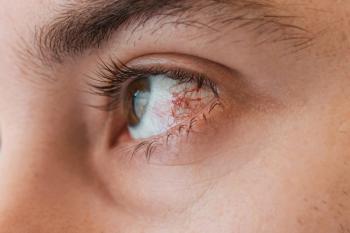
A faster path to more rapid COVID-19 diagnosis
Diagnosing COVID-19 just got faster with a test that claims to provide rapid virus detection markedly faster than reverse-transcriptase polymerase chain reaction (RT-PCR) testing.
Diagnosing COVID-19 just got faster with a test that claims to provide rapid virus detection markedly faster than reverse-transcriptase polymerase chain reaction (RT-PCR) testing.
Researchers led by senior author Jaebum Choo, PhD, from the Department of Chemistry, Chung-Ang University, Seoul, South Korea, announced this new molecular diagnostic platform that uses gold nanoparticles to rapidly identify the virus and cut down on the time currently required for diagnosis by PCR.1
The investigators explained that, while RT-PCR has good sensitivity for virus detection, the process takes such an extended time to diagnose the SARS-CoV-2 virus because of the required number of thermocycling steps.
This new nanotechnology-based platform, called the surface-enhanced Raman scattering (SERS)-PCR detection method, reduces the number of thermocycling steps needed to amplify the DNA.
SERS-PCR uses a “gold nanoparticle-internalized nanodimple” substrate (AuNDS) that reduces the number of PCR cycles required to amplify and detect viral genes needed in conventional RT-PCR, thus shortening the process and possibly helping stop the spread of the virus.
Detecting DNA
The newly developed SERS-PCR assay uses SERS signals to detect “bridge DNA,” which they defined as small DNA probes that slowly break down in the presence of target viral genes.
Therefore, they explained, in samples from patients positive for COVID-19, the concentration of bridge DNA (and therefore the SERS signal) continuously decreases with progressive PCR cycles.
In contrast, when SARS-CoV-2 is not present in the sample, the concentration of bridge DNA and the resultant SERS signal remain unchanged. In this way, SARS-CoV-2 can be rapidly detected in patient samples.
When contrasting the conventional technology with the new “gold” method, Choo pointed out that RT-PCR requires 25 thermocycles to reach a detectable threshold value and another method, magnetic bead-based SERS-PCR, needs 15 cycles; however, the AuNDS-based SERS-PCR methods needs only 8 cycles.
Choo and colleagues emphasized that “early COVID-19 detection and isolation are key for controlling disease transmission and protecting vulnerable populations.” However, the current RT-PCR technique creates a testing backlog that leads to delayed diagnoses that opens the door for continued viral transmission.
“SERS-PCR could be an important tool in our arsenal against the COVID-19 pandemic. It could also create a paradigm shift in the field of molecular diagnostics, revolutionizing how we detect infectious diseases and tackle future epidemics,” they concluded.
Reference
1. Wu Y, Dang H, Park S-G, et al. SERS-PCR assays of SARS-CoV-2 target genes using Au nanoparticles-internalized Au nanodimple substrates. Biosens Bioelectron 2022;197:113736; DOI: https://doi.org/10.1016/j.bios.2021.113736
Newsletter
Want more insights like this? Subscribe to Optometry Times and get clinical pearls and practice tips delivered straight to your inbox.



















































.png)


